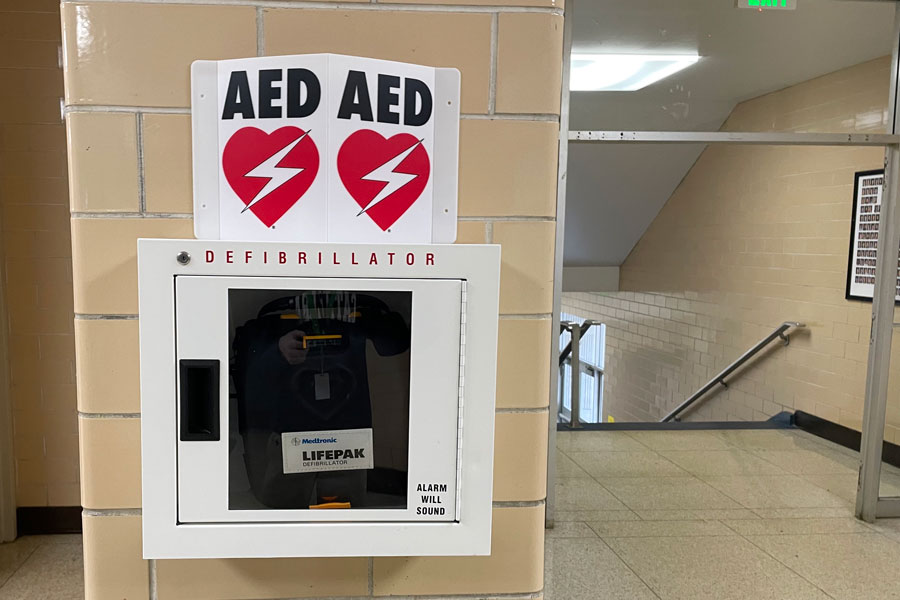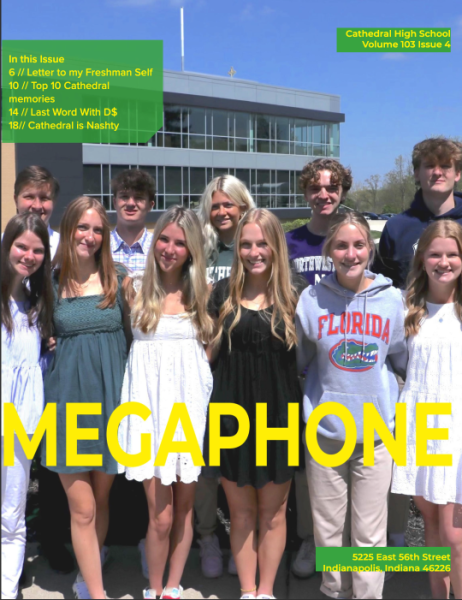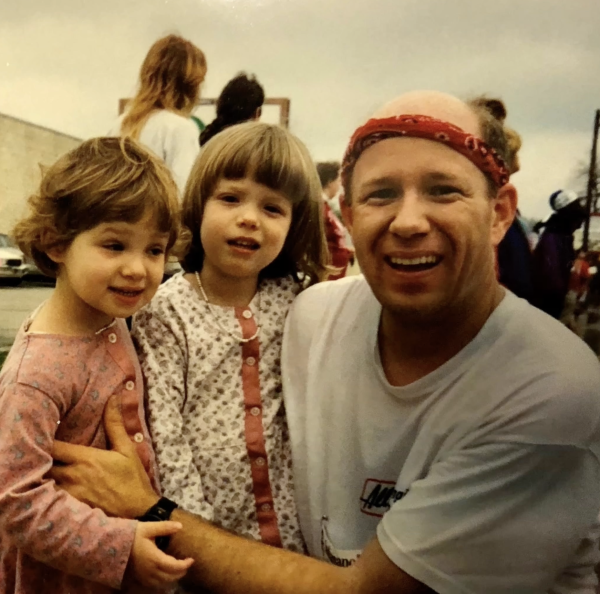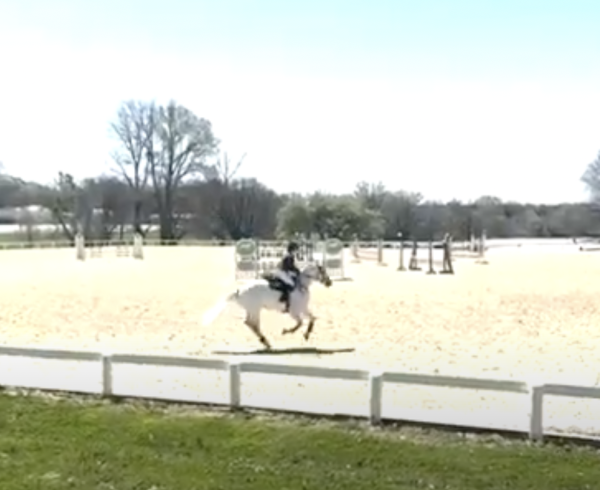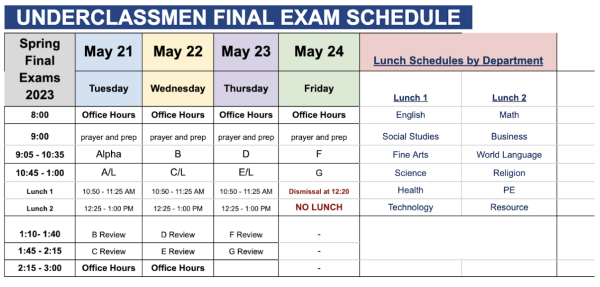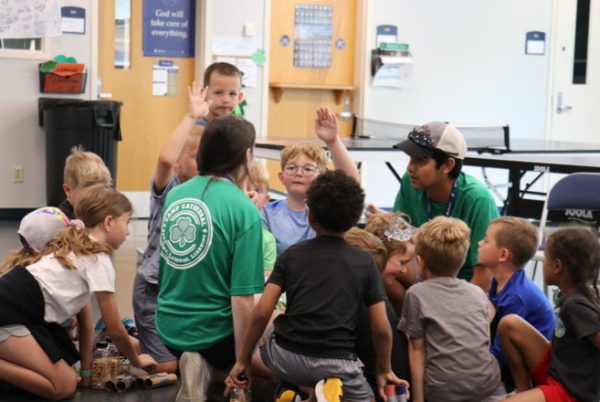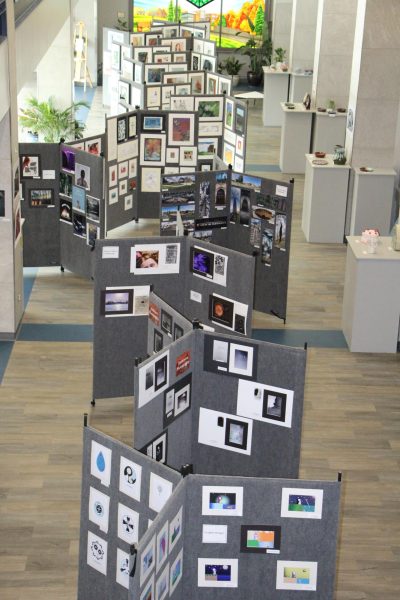Cathedral is city’s first Heart Safe high school
Nurse, administration coordinate efforts with Riley Hospital
There are eight defibrillators around campus, with this one located outside of school nurse Mrs. Marianne Vogt’s office.
With more than 1,100 individuals on campus every day, the chance of a student or teacher experiencing a heart related incident at school is a possibility, and this daunting thought can cause concern.
However, the school has recently been certified as a Heart Safe School, and this means that Cathedral has met rigorous standards in regards to being equipped to save lives.
With Cathedral being the first Heart Safe high school in Indianapolis, school nurse Mrs. Marianne Vogt ‘83 said, “I think it’s really great. It’s something we should be proud of.”
Vogt explained that the program, organized by Mr. Jeff Utzinger, father of senior Jeff Utzinger, along with a doctor from Riley Hospital for Children, required the safety team to take part in several meetings and learn about heart safety. Additionally, the safety team participated in CPR drills.
“All the teachers are trained in CPR, and they’re trained on defibrillators,” Vogt said. The school has eight defibrillators, and there is one within two minutes of any place on campus.
Defibrillators, or AEDs, are much more successful at resuscitating a victim than CPR. The device sends shocks throughout the person’s body, which helps revive them. Vogt said, “CPR is about 10% effective at saving someone’s life, and an AED is between 30 and 50% effective.”
In the event that someone had a heart related emergency, Vogt said, “The first person on the scene would get help and open their airway.” The nurse explained that the safety team would rush to the location with AEDs, and she would bring her medical bag. The first safety team member would assess the victim, and if they find that the person is not breathing, then they would begin CPR. “The second person there is going to set up the defibrillator. Then as more people come, they take over different jobs like doing the airbag to breathe,” Vogt said.
Vogt said she is confident in the safety team, and she believes that defibrillators truly save lives.
Vogt said she advised other schools “to get in contact with Mr. Utzinger, or the doctor (from Riley), because it’s a really simple thing to do. It’s totally worth the amount of time you put into it, and being prepared for an emergency like that can save someone’s life.”

Daniel Kent is a senior and Managing Editor for the Irish Connection Media Network and the Megaphone and has been on staff since his sophomore year. He...


